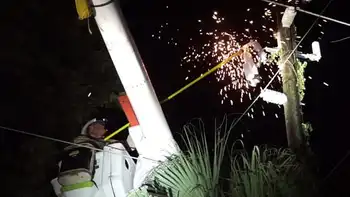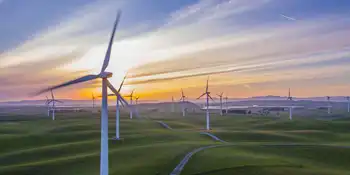Anger erupts over conflicting coal bed decisions
By Globe and Mail
Electrical Testing & Commissioning of Power Systems
Our customized live online or in‑person group training can be delivered to your staff at your location.

- Live Online
- 12 hours Instructor-led
- Group Training Available
But opponents of the project are furious, especially since the province on the same day announced a two-year moratorium on coal bed activity in the Klappan, where native bands and conservation groups had dug in against Shell Canada's plan to explore for the resource.
"Why have they ignored concerned citizens in the Elk Valley and granted BP tenure, yet at the same time they have imposed a two-year moratorium on (coalbed methane) development in northwestern B.C.?" said Casey Brennan, a program manager for Fernie-based conservation group Wildsight.
The BP tenure was granted after a comprehensive referral process that included local natives, communities and government agencies, B.C. Energy Minister Richard Neufeld said.
BP's Mist Mountain project could last 50 years and feature as many as 150 well pads consisting of 10 wells per site. The company has spent the past few years doing preliminary work in the 500-square-kilometre project area in southeastern British Columbia. Fernie City Council opposes the project, but the nearby town of Elkford backs it.
The province is keen to develop B.C.'s extensive coalbed-methane reserves, but some residents of potential production areas are less enthusiastic.
Shell Canada has had coal bed interests in northwestern B.C. since 2004, but has had its exploration program mostly on hold since 2005, saying it respected local communities' demands for more consultation.
The announcement by the province means Shell's exploration is shelved for at least another two years.
Conservation groups are worried about potential impacts on salmon. The area Shell wants to explore contains the headwaters of the Skeena, Nass and Stikine Rivers.
The Tahltan natives - comprising on-reserve and off-reserve residents living in Telegraph Creek, Dease Lake and Iskut - need time to come up with a sustainable resource plan, said Anita McPhee, chair of the Tahltan Central Council.
"At this point in time we can't see this type of development advancing without having full and complete information," she said.
"There needs to be a proper framework for decision making. And there also needs to an informed decision-making process. And that wasn't taking place."
The coalbed-methane decisions were made as natural gas prices are falling and other projects are winding down or being delayed.
Toronto-based Barrick Gold's Eskay Creek mine, a profitable gold and silver operation that employed many Tahltan workers and contractors, wound up production early this year.
Galore Creek, a massive copper-gold project jointly owned by Vancouver companies Teck Cominco and NovaGold Resources, was put on hold last year after costs ballooned.
Other potential projects are on hold pending a commodity comeback or new infrastructure, including a proposed electricity transmission line for the region.
That slowdown poses employment challenges, but doesn't lessen the Tahltan's determination to take a cautious approach to development, Ms. McPhee said.
"There are definitely some economic development challenges because of the financial crisis," she said. "In Tahltan territory and everywhere, I suspect."











